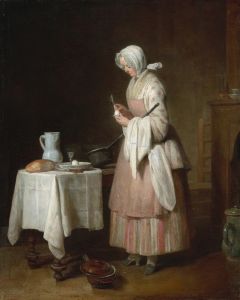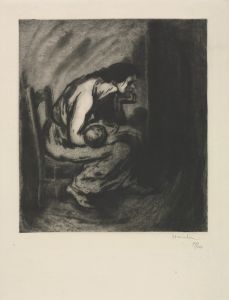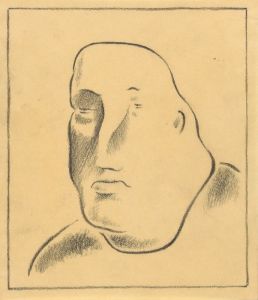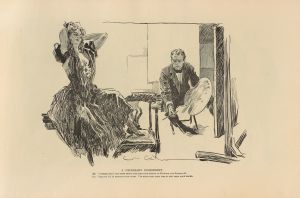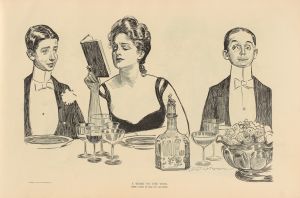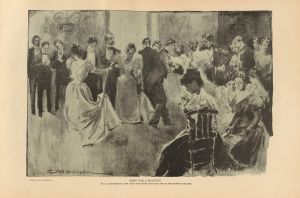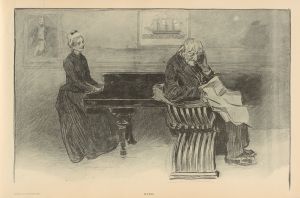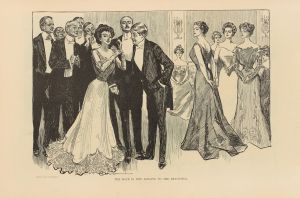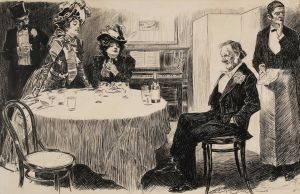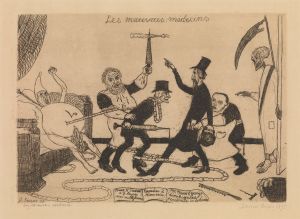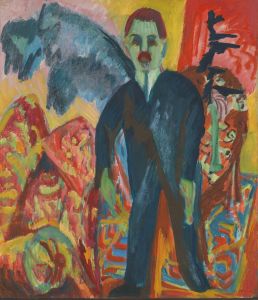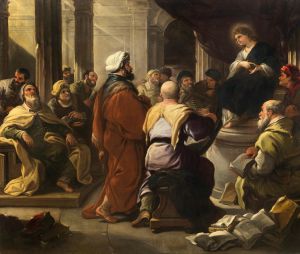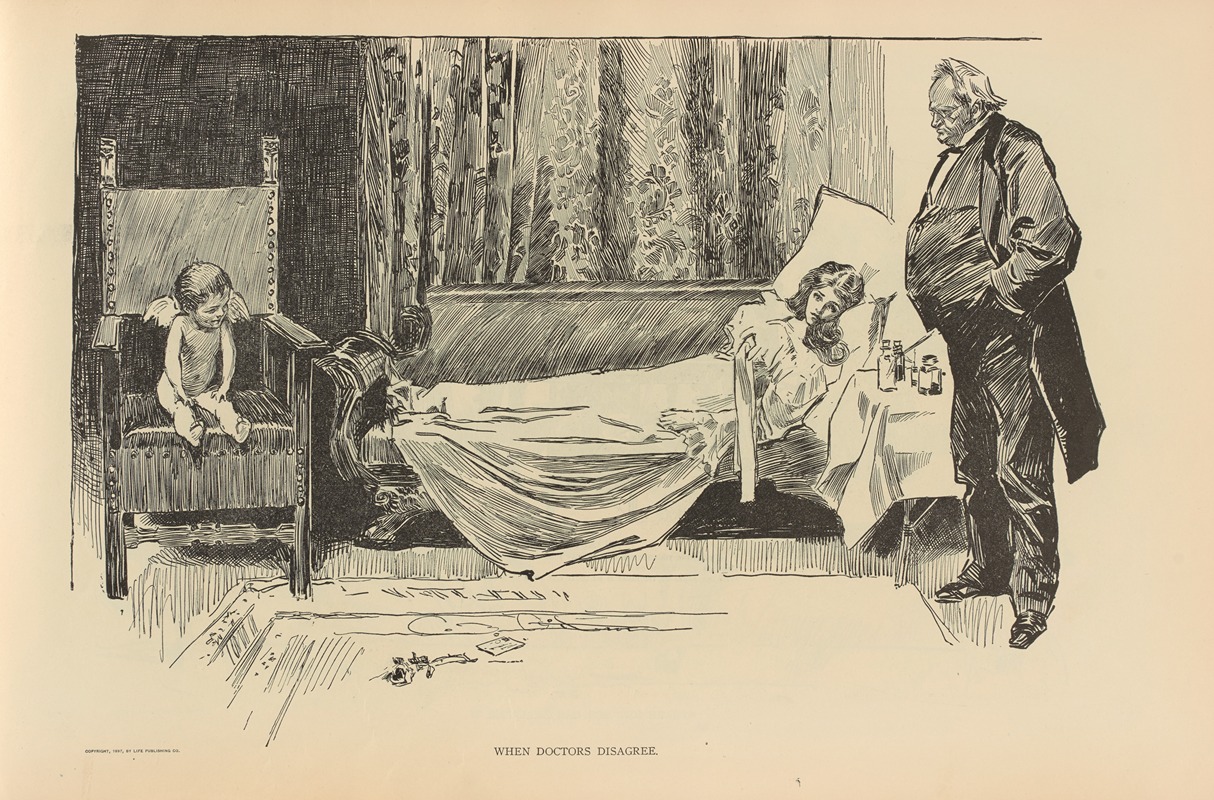
When doctors disagree
A hand-painted replica of Charles Dana Gibson’s masterpiece When doctors disagree, meticulously crafted by professional artists to capture the true essence of the original. Each piece is created with museum-quality canvas and rare mineral pigments, carefully painted by experienced artists with delicate brushstrokes and rich, layered colors to perfectly recreate the texture of the original artwork. Unlike machine-printed reproductions, this hand-painted version brings the painting to life, infused with the artist’s emotions and skill in every stroke. Whether for personal collection or home decoration, it instantly elevates the artistic atmosphere of any space.
Charles Dana Gibson was an influential American illustrator best known for his creation of the "Gibson Girl," a representation of the idealized American woman at the turn of the 20th century. His work was widely published in magazines such as Life, Harper's Weekly, and Scribner's, and he became one of the most celebrated illustrators of his time. Among his numerous works, "When Doctors Disagree" stands out as a notable piece, though it is not as widely recognized as some of his other illustrations.
"When Doctors Disagree" is a black-and-white illustration that exemplifies Gibson's keen eye for social commentary and his ability to capture the nuances of human interaction. The illustration typically features a domestic scene where multiple doctors are present, each presumably offering different opinions or diagnoses, which is the source of the title's implication of disagreement. This setup provides a humorous take on the medical profession and reflects the uncertainties and complexities often involved in medical consultations during that era.
Gibson's work, including "When Doctors Disagree," is characterized by its detailed line work and the expressive nature of his characters. His illustrations often contained subtle humor and social critique, which resonated with the public and contributed to his popularity. The scene in "When Doctors Disagree" likely reflects the societal attitudes of the time towards medicine and the sometimes conflicting nature of medical advice, a theme that remains relevant even today.
The illustration would have been created during a period when the medical field was undergoing significant changes, with advancements in medical knowledge and practice. However, it was also a time when medical opinions could vary greatly, and the illustration captures this aspect of the era's medical practice. Gibson's ability to encapsulate such themes in his work is part of what has made his illustrations enduringly popular.
Charles Dana Gibson's illustrations, including "When Doctors Disagree," were not just artistic expressions but also commentaries on the social and cultural dynamics of his time. His work provides insight into the societal norms and issues of the early 20th century, making them valuable both as art and as historical documents. While "When Doctors Disagree" may not be as famous as the "Gibson Girl," it remains an important part of Gibson's oeuvre, showcasing his talent for blending art with social observation.
Overall, "When Doctors Disagree" is a testament to Gibson's skill as an illustrator and his ability to engage with the cultural and social issues of his day through his art.





